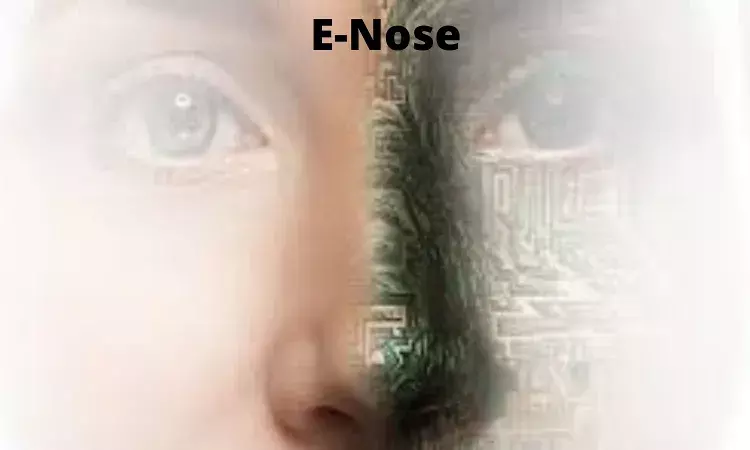- Home
- Medical news & Guidelines
- Anesthesiology
- Cardiology and CTVS
- Critical Care
- Dentistry
- Dermatology
- Diabetes and Endocrinology
- ENT
- Gastroenterology
- Medicine
- Nephrology
- Neurology
- Obstretics-Gynaecology
- Oncology
- Ophthalmology
- Orthopaedics
- Pediatrics-Neonatology
- Psychiatry
- Pulmonology
- Radiology
- Surgery
- Urology
- Laboratory Medicine
- Diet
- Nursing
- Paramedical
- Physiotherapy
- Health news
- Fact Check
- Bone Health Fact Check
- Brain Health Fact Check
- Cancer Related Fact Check
- Child Care Fact Check
- Dental and oral health fact check
- Diabetes and metabolic health fact check
- Diet and Nutrition Fact Check
- Eye and ENT Care Fact Check
- Fitness fact check
- Gut health fact check
- Heart health fact check
- Kidney health fact check
- Medical education fact check
- Men's health fact check
- Respiratory fact check
- Skin and hair care fact check
- Vaccine and Immunization fact check
- Women's health fact check
- AYUSH
- State News
- Andaman and Nicobar Islands
- Andhra Pradesh
- Arunachal Pradesh
- Assam
- Bihar
- Chandigarh
- Chattisgarh
- Dadra and Nagar Haveli
- Daman and Diu
- Delhi
- Goa
- Gujarat
- Haryana
- Himachal Pradesh
- Jammu & Kashmir
- Jharkhand
- Karnataka
- Kerala
- Ladakh
- Lakshadweep
- Madhya Pradesh
- Maharashtra
- Manipur
- Meghalaya
- Mizoram
- Nagaland
- Odisha
- Puducherry
- Punjab
- Rajasthan
- Sikkim
- Tamil Nadu
- Telangana
- Tripura
- Uttar Pradesh
- Uttrakhand
- West Bengal
- Medical Education
- Industry
Electronic noses effectively detect cancer with high accuracy using exhaled breath: JAMA

Netherlands: Electronic noses (e-noses) have a relatively high diagnostic accuracy in the detection of cancer in exhaled breath, suggests a systematic review and meta-analysis results published in JAMA Network Open. However, the researchers add that there is a need for standardized external validation studies that investigate their diagnostic accuracy for establishing their role in the diagnostic workup of cancer.
Cancer has become a major cause of global mortality, leading to the emerging recognition of cancer control as a global health priority. The composition of volatile organic compounds (VOCs) in exhaled breath changes because of pathological processes, such as cancer and can be used for noninvasive cancer diagnoses. Exhaled breath contains thousands of VOCs which vary in composition depending on health status.
Electronic noses (e-noses) are a relatively new, emerging technique for analyzing VOCs in exhaled breath. E-noses are portable, cheap, and easy-to-use diagnostic tests that produce rapid results. Several reviews have uniformly concluded that e-noses have the potential to become promising diagnostic tools in everyday clinical practice, but no e-nose is being used in clinical practice to detect malignant tumors.
Co-author Max H, Maastricht University, Netherlands, and his research team conducted a Systematic Review and Meta-analysis to provide an overview of the diagnostic accuracy and methodologic challenges of using e-noses for cancer detection.
Researchers performed an electronic search in the PubMed and Embase databases (2000-2021). Inclusion criteria were the use of e-nose technology, detection of cancer, and analysis of exhaled breath. Exclusion criteria were set as studies published before 2000; not performed in humans; not performed in adults; that only analyzed biofluids; and that exclusively used gas chromatography-mass spectrometry to analyze exhaled breath samples.52 articles with a total of 3677 patients with cancer were identified. The main outcomes were sensitivity, specificity, and mean area under the receiver operating characteristic curve.
Key findings of the review,
• The sensitivity of e-noses ranged from 48.3% to 95.8% and the specificity from 10.0% to 100.0%
• The pooled analysis resulted in a mean (SE) area under the receiver operating characteristic curve of 94%, a sensitivity of 90%, and a specificity of 87%.
• The differences in the selection of patients, endogenous and exogenous factors, and collection of exhaled breath, resulted in considerable heterogeneity among the studies.
The authors conclude that the study results demonstrated high diagnostic accuracy of e-noses for the detection of cancer. Though, the existing studies generally consisted of feasibility studies with small sample sizes, a lack of standardization, and a high risk of bias.
Adequately powered, multicenter external validation studies are necessary to establish the potential of e-noses in the diagnostic workup of cancer. Future studies should investigate the type of cancer that would benefit most from the use of e-noses using exhaled breath. Also, before clinical implementation, the lack of standardization and reproducibility in the field of e-nose research must be addressed, the authors wrote.
Reference:
Scheepers MHMC, Al-Difaie Z, Brandts L, Peeters A, van Grinsven B, Bouvy ND. Diagnostic Performance of Electronic Noses in Cancer Diagnoses Using Exhaled Breath: A Systematic Review and Meta-analysis. JAMA Netw Open. 2022;5(6):e2219372. doi:10.1001/jamanetworkopen.2022.19372
BDS
Dr. Hiral patel (BDS) has completed BDS from Gujarat University, Baroda. She has worked in private dental steup for 8years and is currently a consulting general dentist in mumbai. She has recently completed her advanced PG diploma in clinical research and pharmacovigilance. She is passionate about writing and loves to read, analyses and write informative medical content for readers. She can be contacted at editorial@medicaldialogues.in.
Dr Kamal Kant Kohli-MBBS, DTCD- a chest specialist with more than 30 years of practice and a flair for writing clinical articles, Dr Kamal Kant Kohli joined Medical Dialogues as a Chief Editor of Medical News. Besides writing articles, as an editor, he proofreads and verifies all the medical content published on Medical Dialogues including those coming from journals, studies,medical conferences,guidelines etc. Email: drkohli@medicaldialogues.in. Contact no. 011-43720751


